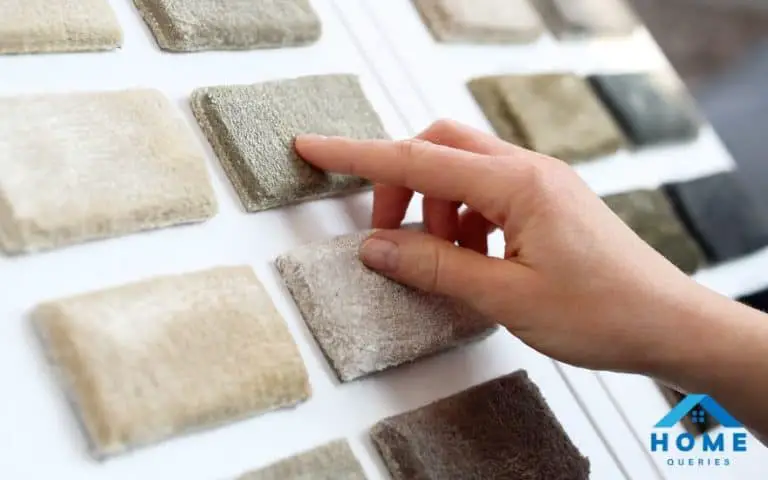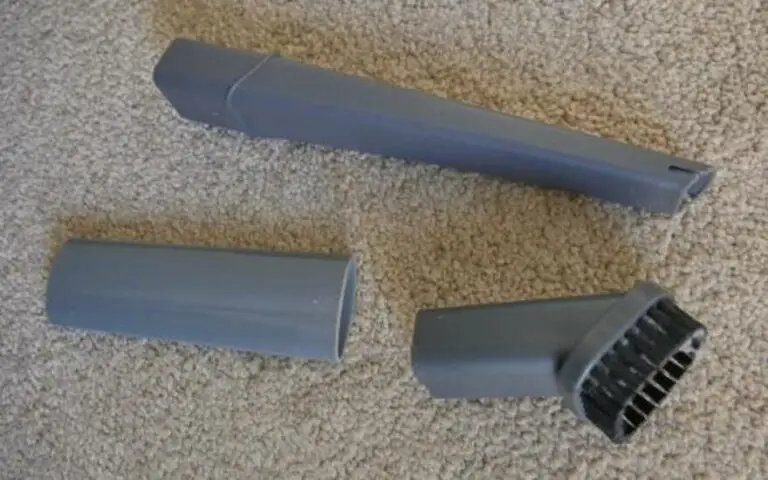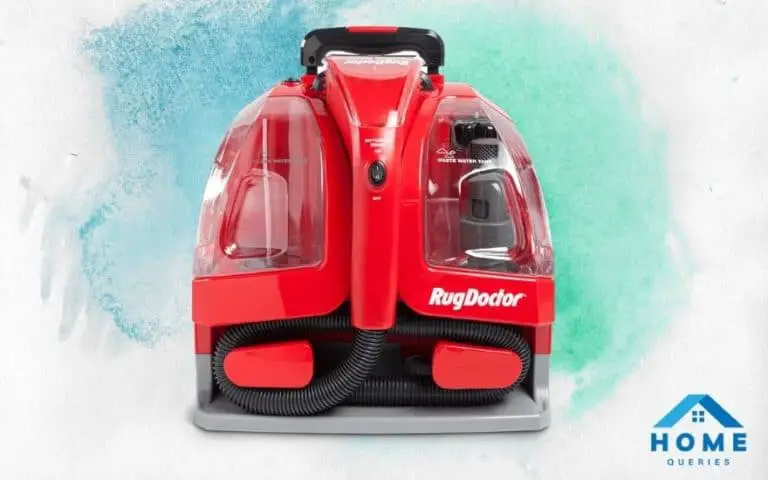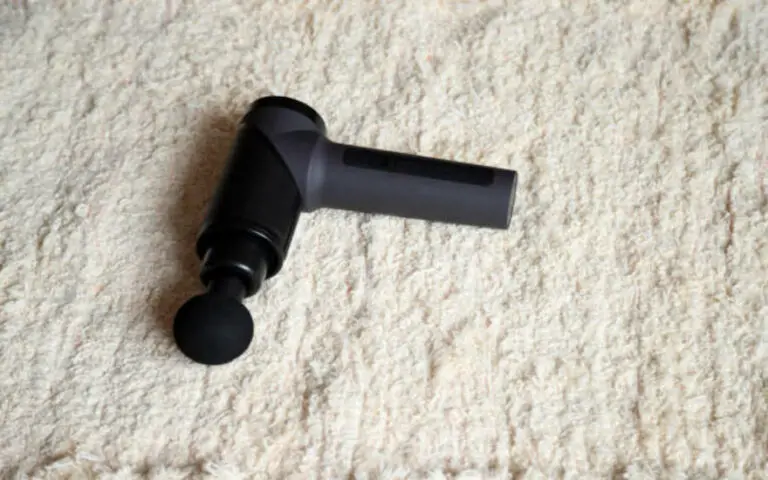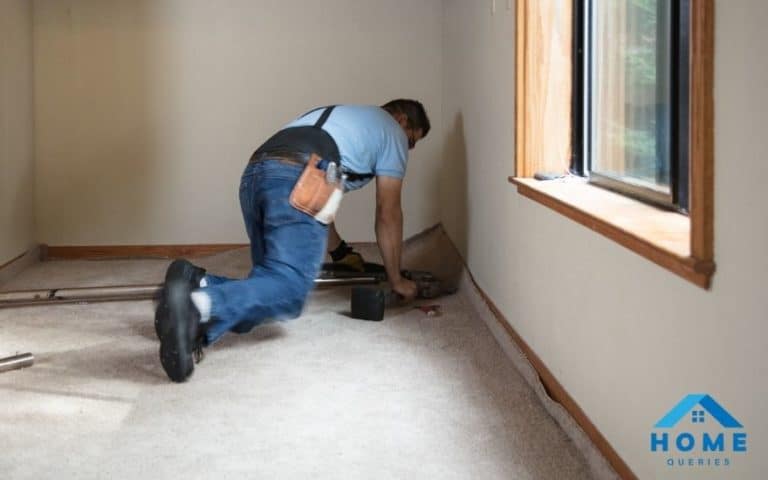Carpet padding is an important part of a carpet installation. Not only does it make the floor softer and more comfortable to walk on, but it also helps protect the underlying flooring from damage.
But is carpet padding glued down? In this blog post, we’ll take a closer look at how carpet padding is installed and whether or not it’s glued down.
So stay tuned!
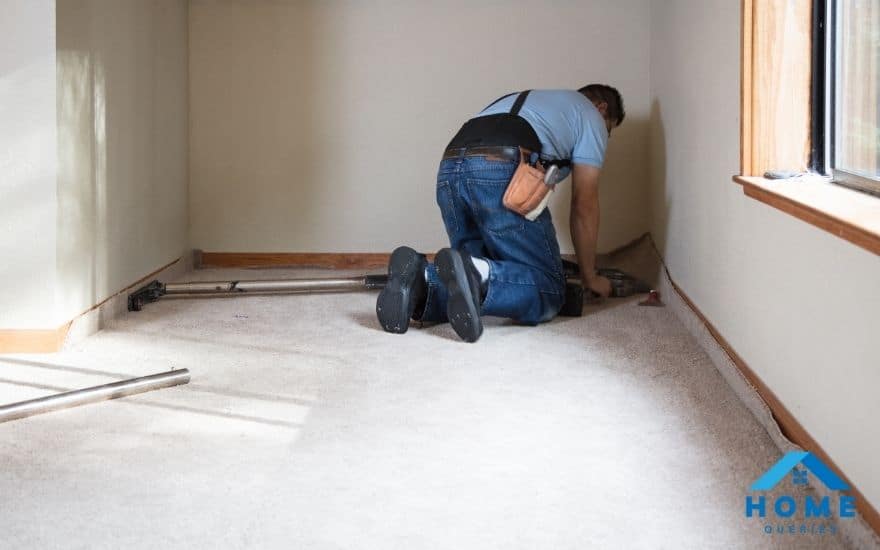
Is Carpet Padding Glued Down?
Most of the carpet sold nowadays uses glued down paddings. However, there are also carpets that do not have paddings like this. So, you can have both according to your usage.
Nowadays, there are non-slip rug pads sold in markets that have built-in paddings. These paddings aid in the attachment of the carpet to the floor as well as maintain the carpet’s evenness.
So, if your sole requirement is a carpet that will not slip, notwithstanding other features, you may try these non-slip carpets out.
On the other hand, carpets without any special features like non-slip can also be glued down to the room floor. Though, it would depend more on how one is installing one’s rugs rather than the kind of carpet he is using.
The following section of the article will show you the ways you will be able to install your carpet and what are their advantages and disadvantages.
Types Of Carpet Installation
Carpets can be put in a number of different methods. We focused on the most common ways available and discussed them here. Let’s see.
The familiar installation types are discussed below:
1) Cut To Fit Installation
In general, cut-to-fit installation entails sizing a carpet to the exact dimensions of the area.
The carpet is simply put on the floor in this process. You can say it more like covering it. The rug is not added to the bottom or anything else. It can be laid on the floor without anything else. But you can also put a pad underneath it.
There are some pros and cons of using this method. Let’s see:
Pros:
- The rug can be easily removed
- It is easier to wash
- There is no risk of any issue with the floor
- Any water spilled on the floor would dry faster
Cons:
- The carpet is easily shifted, making it uncomfortable to walk in some cases.
- The weather has a greater impact.
- The carpet becomes uneven or gets folded.
2) Stretch In Installation
A carpet is fastened along the edge of the wall with certain supports and stretched within the space in this stretch-in installation.
Generally, strips are affixed to the floor along the wall. These strips are usually tackless or wood. It is typically done using nails or glue. Then, a carpet is added using these strips, which allows it to stay fit throughout the room area and not move.
In this approach, the padding is also anchored to the room’s center floor.
Stretch-in installation is a widely known method and is commonly used in family households. But, like every other method, this also has its pros and cons:
Pros:
- It is faster than most other methods.
- It is simpler to detach than fixed ones.
- With pads, it is comfier and insulating.
- The pad improves the carpet’s durability.
- This procedure is useful to work quickly and efficiently with patterned carpets, even if they have slight flaws like bow or skew.
Cons:
- It is hard to install on bigger rooms
- It is unsuitable for heavy rolling traffic
3) Glue Down Installation
Glue-down installation can be very useful when you do not like your carpets moving with every lighter push of your foot. The rug is fastened to the surface directly or with pads that stop it from moving or getting uneven.
Glue down installation is done in two ways:
1) direct installation
2) double installation
1) Direct Glue Down Installation
Direct glue down installation refers to fixing the carpet directly to the floor without anything in between.
As there is no padding to smoothen it, the floor’s surface should be quite smooth. Otherwise, any flaws of the floor will be clearly visible over the carpet. For instance, the rug will also sink if your floor has any dent or small hole. So It is safer to use professionals to install in this way.
Direct glue-down installation is very familiar in official buildings. It is good for many purposes, but there are some cons too. Let’s check them out:
Pros:
- The movement of the carpet in this installation is less than any other.
- best for rolling traffic (wheelchairs, for example)
- It is best suited for bigger rooms and spaces
- good for ramps
- less weather effect on the setting than any other
- low profile with safer transition, useful for stores.
Cons:
- Not much comfortable and insulation because of the absence of a pad
- It is difficult to remove
- The carpet does not last long if it is not protected by a pad. A pad functions as a stress absorber and also significantly improves the lifespan of a rug.
2. Double Glue Down Installation
It works in the same way as direct installation. But in double glue-down installation, first, you have to attach a pad to the floor of the space. The carpet comes in the second step and is added to the pad.
However, there is a specific pad to use for this purpose. These pads are densified than the normal pads and are better to use in this installation method.
Double glue down installation also has its pros and cons, they are:
Pros:
- The pad makes the carpet comfier.
- The pad is more insulated by the rug.
- the carpet becomes more durable because of the use of a pad
Cons:
- It is most difficult to remove among all the installation methods
- It is costlier than others because of the double glue pad.
- Double glueing requires more work, making the installation costlier too.
So, judge the pros and cons along with your requirements and choose the most suitable one for you.
Should Carpet Pad Be Glued Down?
Using stretch installation is not much useful in masonry or concrete floors. In this way, the pads aren’t fully non-slip and can still be moved. And with a cut-to-fit installation, it becomes way more irritating.
That’s why the carpet pad should be glued down to prevent it from moving.
Where Does Carpet Pad Need To Be Glued Down?
As we mentioned earlier, concrete floors are more prone to carpet slips. So, it is necessary that the carpet be glued down on this kind of floor.
Tiles or wood floors are also suitable in this regard. You are free to use them in these types of floorings too.
How To Glue A Carpet Pad?
The best way, to be honest, is to contact a professional for the installation of your floor. As glued-down carpet is tough to remove, any mistake might cost you a good amount of annoyance.
However, doing your own work is satisfying to some level. Moreover, installation from professionals is sometimes very costly. In that case, you can try to glue a carpet pad yourself.
To do this, first, gather the things you need. They include carpet glue, trowel, utility knife, vacuum, broom, and duct tape. Now the process starts:
1) Cleaning The Room
As we said earlier, any flaws in the floor can be visual over the carpet. So first, clean the surface with a broom. You can use water while doing it, but you must dry it after.
Then, use the vacuum to clean smaller dust before starting the next process.
2) Cutting The Carpet
Next, The carpet needs to be cut into sections. This can be done through the utility knife. The length of these strips will be the same as the room length and 3-5 feet in width.
Now, roll the strips next to the wall at the end of the room. It would be easier for you to handle if they were on the same end of the room.
3) Apply Glue
Apply the glue to a 4-foot section of the floor closest to a wall. The adhesive must be a good carpet glue. The best way to apply it will be with a hand trowel.
Now, lay the carpet pad on top of it. Be careful to keep the waffle side on the upper side. Then press it to attach it perfectly. Make it even and remove wrinkles. Now, wait for the glue to dry. It can take up to 10-15 minutes.
Next, continue the same process with other parts of the floor until the entire pad is glued down. Allow each glue section to dry before you move on to the next. Otherwise, you might risk the carpet pad shifting during installation.
4) Apply Tape
Cut the duct tape into strips first. After that, rub them down the carpet pad’s seams. This is so that they might not end up curling later.
5) Install The Carpet
Wait for at least a day to dry up the whole thing. Then install the carpet on top of the pad.
Watch this video from “Floors by Southern boys” about “QUICK TIP ABOUT PAD GLUE”.
Conclusion
Carpets are one of those home appliances seen every day but not noticed. They are used every day. However, they will get to your notice when they shift every time you walk.
So it is better if you glued down your carpet padding. This is applied once but useful for every single day after.


